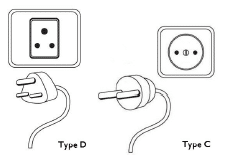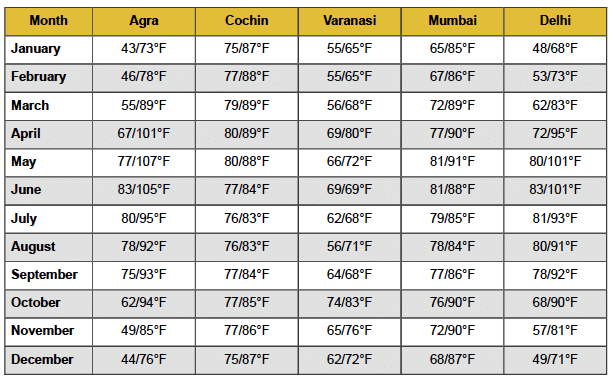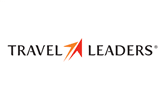INDIA

Fun Facts From Globus Tours
-
-
- It is illegal to take Indian currency (Rupee) out of India.
- Chess was first played in India.
- India is the world’s largest producer of beans (kidney and chickpeas), and bananas.
- All of India is in one time zone
-
India – a world of vivid color, drenched in culture, and a deeply rich history – is a difficult country to define. Known to be extremely diverse, India is the second most populous country in the world. A convergence of varying beliefs, Western influences, languages, modern economy, and timeless traditions make India one of the most stimulating and evocative countries to visit. Perhaps one of the most unique features of India is how often you can encounter these customs at any time of day, on any street, and in the midst of everyday life among the locals. It’s a lot to take in and you may experience some culture shock at first, but before long the country’s fascinating way of life and its distinctive personality will draw you in. Between the fabulously flavorful cuisine, the vibrant people, and captivating scenery, visiting India will be a memorable and life-changing endeavor.
VISAS, PASSPORTS, AND OTHER ENTRY REQUIREMENTS
You are responsible for obtaining and paying for all entry documents (visas, etc.) and for meeting all health requirements (inoculations, etc.) as required by the laws, regulations, or orders of the countries you will visit. We cannot accept liability if you are refused entry onto any transport or into any country for failure to carry correct documentation.
A visa for your visit to India is necessary for US citizens. If you hold a passport from another country, check with your local consulate about requirements for travel to India.
India visas must be obtained prior to departing the U.S. either through an embassy, visa service or online at the India Electronic Travel Authority website at https://indianvisaonline.gov.in/visa/info.jsp. This website will work for most passengers but if not check with the embassy or a visa service. The embassy or visa service will be able to advise the latest requirements for obtaining the visa.
In general, going through a visa service is more expensive but it offers convenience and peace of mind. If you choose to go this route, we recommend contacting Generations Visa Services (GenVisa), our preferred partner for visa and passport services, at least 90 days prior to departure. GenVisa has a special website and toll-free number. Call 800.845.8968, email info@genvisa.com, or visit their below websites for additional information. Our travelers receive discounted prices and other special services:
- For Monograms, visit: genvisa.com/monograms
- For Globus, visit: genvisa.com/globus
- For Avalon, visit: genvisa.com/avalon
- For Cosmos, visit: genvisa.com/cosmos
All passengers traveling internationally are required to have a passport. Most countries require that the passport be valid for at least six (6) months beyond the conclusion of your trip, so please check the expiration date carefully. It is also recommended you have a minimum of three blank pages in your passport when traveling, as many countries require blank pages. Please carry proper identification (your passport) on you and do not leave it in your suitcase or hotel room. Most countries have laws that require you to carry your passport with you at all times.
COUNTRY CODES
The country code for India is 91. When calling to India from overseas, dial your international access code (011 from the US/Canada), followed by the country code, area code, and phone number. Phone numbers in India are 10 digits in length. Dialing from the US/Canada: 011 91### ### ####.
CURRENCY
In India the local currency is the Indian Rupee.
-
-
- Banknote denominations: 5, 10, 20, 50, 100 Rupee
- Coin denominations: 10, 20, 25, 50 Paise; 1, 2, 5 Rupee
-
As a general guideline, bring a variety of payment means, particularly in the event that you have difficulties with your preferred method of payment.
Cash
ATMs are the most convenient way to obtain money in India as they are readily available. Money exchange services are also available at the airport on arrival and at some hotels. ATMs are the most convenient way to obtain money in China as they are readily available throughout the country.
For the most current exchange rates, please go to our website at Globusjourneys.com/Currency.
Credit Cards
Major credit cards are widely accepted (Visa and MasterCard are most common) but some shops and restaurants require a minimum purchase amount when using them (so they are not appropriate for incidentals such as ice creams, snacks etc). You might consider bringing more than one card, as some outlets may not accept all types. Due to increasing credit card fraud worldwide, be prepared to show identification (i.e. your passport or driver’s license) when making a transaction with your credit card. If you use a credit card for your purchase, you will be debited in the local currency, and your bank will establish the rate of exchange on the debit.
Traveler’s checks
Although a secure means of carrying money, traveler’s checks unfortunately are becoming very hard to use. Due to this we recommend you plan on using cash and credit cards only.
Bank Hours:
Mon. – Fri. 10 am – 4 pm
Sat. 10 am – 1 pm
Closed 2nd and 4th Saturday of each month
Sun. Closed
BUDGETING AND SHOPPING
The following budget guidelines are just approximate values or starting values for meals and are per person.
Actual prices will vary widely by restaurant and city within a country but below are some averages as provided by our experienced personnel.
-
-
-
- The approximate cost of a soft drink/mineral water/coffee is 50-60 Rupees.
- An average lunch consisting of a salad or sandwich and a soda or water starts at approximately 200-250 Rupees.
- Dinner at a mid-range restaurant with dessert and a non-alcoholic beverage starts at approximately 1,000-1,500 Rupees.
-
-
Shopping
Prices are as marked in department stores, though in markets it is customary to barter. Start negotiating with an offer at one-third or half the vendor’s initial price.
Please be warned that if you buy items on tour to be shipped to your home, customs import charges are hardly ever included in the price. Sales tax or GST (Goods & Services Tax) is normally already included on price tags; GST refunds, if applicable, are processed at the departing airport from the relevant country.
TIPPING
Tipping, locally referred to as baksheesh, is widespread in India. Often, you tip not so much for the good service, but in order to get things done. It is customary to tip table staff at local restaurants the equivalent of 10% of your bill.
Some cab drivers may automatically round up your fare as a tip.
Other services such as bar or room service are at your discretion but we recommend no more than 50 rupees.
ELECTRICITY AND ELECTRICAL OUTLETS
Outlets
Voltage for outlets is 230. North American voltage is generally 110V. Some, but not all, hotels feature multiregion outlets that accept different types of plugs. Due to this, for dual voltage electronics, we still recommend you bring an adapter. If you have single voltage electronics (110V) a converter is also required. Bathroom outlets are usually for razors only. India commonly uses two electrical plug styles that look like:

TEMPERATURES
India is large with diverse weather patterns. The Himalayas stop cold winds from reaching most of India so winters remain warm and summers can get very hot.
-
-
- November to March – Pleasant with warm days. Southern India sees some rain in November and December.
- April to June – By far the hottest time of the year with rain picking up in June
- July to October –-Some rain persists through September with temperatures cooling from the hot summer months.
-
To help you plan, below are average low and high temperatures.

To convert to Celsius, subtract 30, then divide by 2. While not exact, this simple formula will give a close estimation.
FOOD SPECIALTIES
Indian cuisine is famous for being some of the most flavorful in the world. Popular dishes include: Samosa – fried pastry with a savory filling. The filling can range from lamb or chicken to potatoes, onions, and lentils; Tandoori chicken – chicken marinated in yogurt and spices and cooked in a Tandoor or oven. Naan – an oven-baked flatbread that is perfect for scooping up or dipping in curry.
Drinking Water
Tap water is generally not safe to drink in India. For sightseeing and excursions, we recommend you purchase bottled water to bring with you or bring some from your hotel room. Bottled water is also common in restaurants.
CUSTOMS AND CULTURE
Smoking is common so locals tend to be less sensitive to issues regarding smoking around others and often ignore “non-smoking” signs.
FEW WORDS OF THE LOCAL LANGUAGE

Hindi:
Good morning / day: Namaste, Good evening: Namaste, Hi: Namaste, Please: Kripya, Thank you: Dhanyawad, You’re welcome: Aap ka swagat hai, Yes: Haan, No: Nahi, Do you speak English?: Aap English bolte hain?, I don’t understand: Main samajha nahi , How much?: Kitna ?, 1 (one): Ek, 2 (two): Do, 3 (three): Teen, 4 (four): Char, 5 (five): Paanch, 6 (six): Chey, 7 (seven): Saat, 8 (eight): Aath, 9 (nine): Naun, 10 (ten): Dus, Where is … ?: Kahan hai yeh?, Telephone: Telephone, Bathroom: Toilet, Tea: Chai, Coffee: Coffee, Bottled water: Mineral water (carbonated = Soda), Cheers!: Cheers!, Have a nice day!: Shubh din.
U.S. DEPARTMENT OF STATE COUNTRY INFORMATION
Additional country-specific information for US citizens can be found on the US Government’s website www.travel.state.gov. Here, you can find the most up-to-date information about destination descriptions, passports/visas, safety and security, transportation, travel local laws, alerts/warnings, vaccinations, and more. For citizens of other nations, we recommend you consult your local consulate for travel information, regulations, and requirements.













